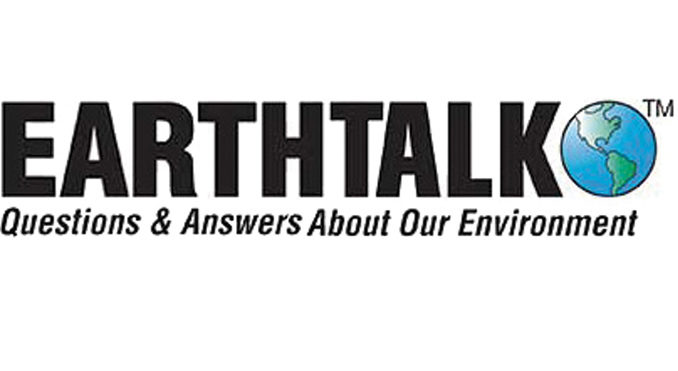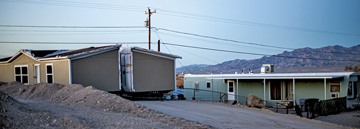
Dear EarthTalk: How are reptiles faring these days in the face of climate change and other environmental threats? ~ L.M. Smith, Boston, MA
Reptiles, like other animals and plants, face growing threats as human influence on the environment increases. Certain reptiles are especially threatened; some 61 percent of turtles are threatened or extinct. Tracking the exact consequences of human activity on reptiles, however, has been difficult as research has primarily focused on mammals and birds, which draw more public attention, although evaluations have found reptiles to be more threatened than birds.

A recent study that observed 10,196 species determined that 21.1 percent of reptiles are at risk of extinction. These species contain an estimated 15.6 billion years of phylogenetic diversity (PD). This science uses a phylogenetic tree, which shows how closely related species are, to describe the amount of biodiversity in an ecosystem and obtain a more useful measurement than just counting numbers of species. In addition, the adaptations of reptiles to ecological conditions perform help sustain ecosystems, including supporting food chains. Threats to reptiles include habitat loss and environmental damage, invasive species, diseases, pollution, exploitation, poaching and global climate change.
Habitat destruction is the largest threat. As urban sprawl, overgrazing and desertification—which in turn prompt expansion of logging and agricultural operations—put greater pressures on land, reptile habitats have been overtaken by humans, creating increasingly stressful conditions for reptiles. Shrinking habitats increase edge effects—which are the effects of separating habitats (like with a road) such that animals cannot reach resources or mates in other parts of the habitat. Now climate change is exacerbating these pressures. Since many reptiles are ectothermic—they cannot generate internal heat and instead rely on external conditions (e.g. sunlight) to warm themselves—temperature increases due to climate change affect them significantly. Many arid-climate reptiles (e.g. lizards and geckos) are already experiencing extremely high temperatures, and minor increases could make their already limited habitats unlivable.
Furthermore, reptiles are particularly prevalent in regions of Southeast Asia, where disruptions to monsoon cycles can obstruct development of reptiles in embryo. Many species—turtles, crocodiles and alligators, for example—lay eggs in wet conditions. Newly-dry and disrupted regions threaten their abilities to survive, cause slow development or growth and skew the natural selection of sex ratios.
Some good news is that methods implemented to protect other types of animals—reducing tropical deforestation, controlling illegal trade and improving productivity in agriculture such that agricultural lands do not need to be expanded—benefit reptiles similarly. However, the current crisis behooves more action to improve conditions for reptiles in particular.
Readers should encourage their representatives to take action. Reptiles play a crucial role in the Earth’s ecosystems, and concerted solutions have the potential to make all the difference.
CONTACTS: The Amphibian and Reptile Extinction Crisis, biologicaldiversity.org/campaigns/amphibian_conservation/index.html; “A global reptile assessment highlights shared conservation needs of tetrapods,” nature.com/articles/s41586-022-04664-7; “Climate Change Impacts on Tropical Reptiles: Likely Effects and Future Research Needs Based on Sri Lankan Perspectives,” frontiersin.org/articles/10.3389/fevo.2021.688723/full.
Dear EarthTalk: How do manufactured homes stack up against traditionally constructed houses in terms of energy efficiency and overall environmental footprint? ~ Jen Jackson, via email
As one might expect, manufactured homes run the gamut with regard to energy efficiency. In an analysis completed by the American Council for an Energy Efficient Economy (ACEEE), it was found that modern manufactured homes used 70.4 MM btu/year, a significant amount less than the 108.5 MM btu/year average seen in traditional, or “site-built” homes.
In addition, the actual manufacture of manufactured homes produces much less waste, as does the on-site setup. According to the Manufactured Housing Association of British Columbia, the construction and set-up of manufactured homes creates 50 to 70 percent less waste than traditional home-building.
Traditional home-building also requires that the materials, tools and workers all be sent to different sites throughout the year. This approach is far less organized and efficient than the streamlined factory process associated with manufactured homes. As a result, all kinds of emissions are produced. In an in-depth report commissioned by the Sturgeon Foundation of Alberta, Canada, carbon dioxide (CO2) emissions of both modular and on-site building projects were compared. It was determined that the on-site construction process produced a whopping 43 percent more CO2 emissions!

According to ACEEE, those who lived in a manufactured home before 1976 “spent more money on their energy bills than on home loans” and spent double on energy per square foot than those who occupied a traditional home. How is this possible? Before 1976, manufactured homes were built more quickly, for less money and with far less regard for energy efficiency. By June of that year, the U.S. Department of Housing and Urban Development (HUD) devised and implemented the HUD Code, setting a higher standard in quality, safety and efficiency of product.
Today, manufactured homes must have sufficient levels of insulation (this includes around ductwork, electrical outlets, lighting, etc.), modern water heaters and energy-efficient appliances. If the manufactured home does not meet the minimum standards set out by HUD, then it is illegal for it to be sold, leased or rented to anybody.
That being said, if you happen to own a manufactured home that was purchased before 1976, there are still many ways that you can upgrade your pad-from-the-past to meet the energy demands of the modern age. Passive solar design is one such avenue, whereby manufactured home-owners orient and design their home space to maximize the amount of sun exposure. This will not only power any solar panels that may have been installed more efficiently, it will also provide both natural light and heat.
Using a solar water heater is another great way to reduce one’s energy expenditures. Though roof-mounted options may be limited (as manufactured homes are less sturdy), the ground-based options are definitely a good choice for anyone with a manufactured home that isn’t moved often.
CONTACTS: Comparison of Carbon Emissions of Modular and Site Built Houses, researchgate.net/publication/360173050_Comparison_of_Carbon_Emissions_of_Modular_and_Site_Built_Houses; Mobilizing Energy Efficiency in the Manufactured Housing Sector, aceee.org/sites/default/files/publications/researchreports/a124.pdf.
Dear EarthTalk: I’d like to upgrade the energy efficiency of my condo but can’t afford the up-front cost of new equipment and materials. Are there any federal or other programs designed to help working people afford to make such transitions? ~ Paul B., Monroe, NY
As of now, residential and commercial buildings contribute up to 40 percent of the world’s energy consumption. Increasing the energy efficiency of these structures can go a long way toward reducing that consumption and our carbon footprint while saving money along the way.
The biggest pitfall with investing in efficient energy sources is the upfront cost. Low-income households which could benefit most from such upgrades are the least likely to have the funds to do so. But now, utilities and local governments are working to implement these services prioritizing needy households.
The Weatherization Assistance Program (WAP) uses U.S. Department of Energy funds to reduce the energy bills of low-income households by helping to pay for efficiency upgrades. The program has benefited over seven million American families so far. Every year, WAP funds such upgrades in 35,000 households, saving almost $400 annually on each. To qualify for WAP, your household must have an annual income equal to or below 200 percent of the federal poverty level.
Another place to look for help is the Low-Income Home Energy Assistance Program (LIHEAP). Using U.S. Department of Health and Human Services funds, LIHEAP provides free energy upgrades that will decrease monthly energy bills while concurrently improving residents’ health and safety. Household incomes must be at or below 60 percent of their state’s median income to meet eligibility requirements.
Nonprofits, usually using WAP funds, also offer a range of incentives for upgrading energy efficiency. They also provide weatherization to households that can’t afford it. By searching “weatherization non-profits” and your state, you can find an array of organizations that can help upgrade your home. These weatherization programs usually offer a selection of efficiency upgrades including: improved insulation and heating systems, fixing leaks and gaps within pipes, and repairing windows and doors. To apply, you can often find directions on the organization’s website. In general, the first step is determining your eligibility; you will usually need proof of annual income. Then, you can complete the application process online or contact a local administrator. If your application is accepted, you can move forward.
But what can you do if you aren’t eligible for these programs? You can still weatherize your own home by fixing minor things around the house. One thing you can do is seal up leaks within air pipes. This can cut your energy consumption by 10 to 20 percent. In addition, by adding insulation, you can make your home less vulnerable to temperature change. You should also clean your filters regularly to make your system run more smoothly. Even simple things like switching to LEDs will increase your efficiency.
These small steps can add up and boost the energy efficiency of your home in surprising amounts. The sooner we implement such steps, the sooner we can tackle the problem of climate change making our world less hospitable.
CONTACTS: Weatherization Assistance Program for Low-Income Persons, benefits.gov/benefit/580; Database of State Incentives for Renewables & Efficiency, dsireusa.org.
EarthTalk® is produced by Roddy Scheer & Doug Moss for the 501(c)3 nonprofit EarthTalk.
See more at https://emagazine.com. To donate, visit https//earthtalk.org.
Send questions to: question@earthtalk.org.

